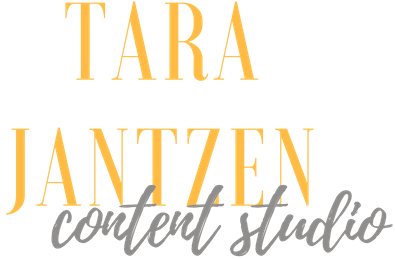No matter the size of your organization, employee town halls are a fantastic way to bring the full workforce together to learn about the company, its projects and programs, and the clients it serves. Where young professionals just starting out, can mix and mingle with senior leadership and top experts. There’s a wealth of information to be shared during regularly scheduled employee town halls, and a great amount of value to be gained along the way.
As the head of communications, I have worked with many leaders to host numerous town halls – for the purpose of regularly scheduled communication checkpoints, for leaders regarding the state of our business, to make big company announcements, or to communicate during times of crisis. The town hall can be an effective tool for building connection, engagement, and credibility with employees.
The town hall can be an effective tool for building connection, engagement, and credibility with employees.
Hosting such events can be a complex challenge depending on the geographic and work style dynamics of a company, as well as the technologies available in your communications toolkit. Here are some of the critical elements I’ve learned to host successful employee town halls.
Build AWARENESS. Beyond emailing an all employee communication announcing the next town hall, consider more advertising across multiple platforms, more than a few times to build awareness, excitement, anticipation, and to set expectations as well.
Once you’ve sent the initial email invitation, post the event announcement to the employee portal, and make it front and center. Keep it visible until after the event is completed.
Ask designated location managers to post flyers or posters in the cafeteria, meeting and break rooms, and building elevators to be sure it’s top of mind.
If you use an invitation tool that adds it to their calendar, be sure to build in reminders so they remember the event is coming. If you’re presenting something new or that will impact employees rather significantly, make that point so they understand why it’s important to attend the event.
Make it ACCESSIBLE. Understand the multiple profiles of your employee population and their access challenges. If you are a small firm in one location, the town hall may just be a meeting with presenters in a conference room. However, if you are larger, in multiple locations, with employees at client locations, in multiple time zones, with limited online access, all of this requires further evaluation and planning. If it feels impossible to find a solution for all employees, apply the 80/20 rule and select the solution that allows you to get the most participation on the live event as possible. A recorded session can be distributed later to those unable to attend the live session.
…apply the 80/20 rule and select the solution that allows you to get the most participation on the live event as possible.
Consider the costs of all solutions as well. Hosting a town hall from phone lines only can get extremely expensive, especially with larger numbers of employees. If you use a bridge line, you’re not only paying for the provider costs for each line per minute of access, but you may also be incurring long distance charges in addition to that.
A better solution for larger participant numbers is to webstream the entire town hall—much lower costs, but also easier for your employees to access from any location.
With this solution, presenters are on phone lines so employees can hear them speaking, and everyone else accesses the event from their laptops via a participant URL which broadcasts the audio. This also allows you to provide visuals for your session, record the town hall for those that missed the live event, and potentially include other features such as professional facilitators, chat options, voting, video, and the ability to track and manage incoming questions.
Speak with your telecommunications provider to assess all options for your specific employee profile needs, the estimated costs associated, and how to get the most from your event experience.
ADD Value. We’ve all participated in conference calls or webcasts where you’re bored to death, being spoken at, about things you don’t care about, or where you have no idea how the content relates to what you do every day.
Discuss what the goal and objectives are for the call so that all presenters understand.
Work with leaders and presenters to ensure the town hall is adding real value to your employees’ daily lives. Discuss what the goals and objectives are for the call so that all presenters understand and align presentations accordingly. You’re taking employees away from doing their work, so provide good content, include necessary clarity and context, pepper the agenda with a variety of pertinent topics, and ensure you have engaging and experienced presenters.
Go a step further by explaining why something is critical in case it’s not obvious, show what it means to their jobs and/or the clients they serve, how it can impact what they do, what it means for the overall business, how it pertains to current or future goals, and how they might take advantage of this information now.
There may be a mix of information that is necessary to communicate and may lean towards the dull side, so explain why it’s important and mix that with more lively content such as success stories, new innovations, employee recognition, volunteerism activities, award mentions, or progress reports.
ADHERE to Branding. I cannot tell you how many times I’ve collected slides in advance, only to find a few of them have developed their own look and feel which looks nothing like our company brand. Even when I provide the meeting template to them, and especially in larger organizations, you always have those groups that want to brand their own project or service area—completely disregarding standards. This confuses employees viewing the slides, and opens a can of worms when it comes to future content creation across the organization.
If you’re not already part of the marketing organization, stay connected to the people who know the brand standards best. Work with them to understand where and when they allow flexibility, and where they require you to work within a certain set of parameters. Some marketing teams allow flexibility if it’s internal use only, others are more strict about the standards.
Let your speakers know in advance so that if they turn something in that’s not to standard, they then understand you will revert their content back to the original template. The ideal scenario is to present a consistent look and feel to employees, giving a seamless and professional, company branded event.
ASK Questions. There’s nothing worse than having a bunch of executives present deck after deck, only to get to the end of a call and no one has a single question. It’s embarrassing actually. There needs to be a dialogue to gain employee participation.
There needs to be a dialogue to gain employee participation.
A great way to engage with employees is to first set the tone for being open to questions, but also to first ask explorative questions yourselves. Tee up specific questions looking for feedback or to specifically drive new questions. This removes fear and sets the tone as conversational.
Try having your lead executive state at the opening of the call that they will be accepting questions at the end. Introduce a subject or project where he or she hopes they will ask questions because there’s a need to know what the potential challenges may be. And as presenters share their topic and slides, have them articulate where they may like input. Remind your audience over and over that you want their questions, comments, and feedback.
During the kickoff of the Q&A session, realize that people may be shy at first—many don’t want to be the first to speak up. A good practice is to have a few questions at the ready to get the ball rolling.
If you’re hosting via webstream only, hopefully, questions are being submitted via the online tool during presentations. Ideally, it’s great to have the person monitoring those questions sitting in the same room as the presenters so they can prep them for each question in advance. This makes for a smoother transition and also gives the presenter a moment to formulate a thoughtful response.
Declare ACTIONS, Be ACCOUNTABLE. One of the biggest complaints about many town halls is that once the event is over, employees never hear about a topic or project again. Or that someone promised follow-ups or actions and then never followed through. This is often why many employees just stop participating in town halls.
This builds trust, reinforces the value of town halls, and supports positive employee morale.
Make it a practice to gain commitment from leaders in advance as to where they want to set a call to action for themselves or for employees, and to be accountable by providing a timeline and sticking to it. As the communications host of the call, take it upon yourself to hold executives accountable to what they promised and drive them to completion so you can then share progress with employees in follow up communications. This builds trust, reinforces the value of town halls, and supports positive employee morale.
Bonus Round—A’s for Presenters:
- ACCESS the call early. Most of these town halls have the feature of the pre-call for presenters. Set protocol by having them dial in no later than 5 minutes in advance so you can do a roll call, answer any final questions, and ensure everyone understands the flow of the event.
- ABOLISH mobile phones. Presenters never sound clear or loud enough when they dial-in from their mobile phones. This can ruin the experience for employees and present a very unpolished and unprofessional event to your audience. Have your senior-most leader stress and support the rule of no mobile phones.
- ADHERE to standards and timelines. Stick to the company brand, don’t introduce new terminology unless it’s necessary, spell out all acronyms (don’t assume everyone knows what it means), stick to the time you were given, and submit your slides on time.
- AUDIENCE appropriate. Remember your audience is all employees—fresh out of college, new experienced hires, mid-levels, and other executives. You’ve got line employees, in-house support, and administrative assistants. Without dumbing it down, explain your content for this diverse audience.
- ANNOUNCE a contact. At the end of your presentation, let employees know whom the person is that they can contact for more information, to get involved, to ask further questions, or to send ideas. This is one more tactic for building engagement and showing you value all input.
How about you—any tips you would recommend for a great employee town hall? I’d love to hear from you in the comments below.
Image Credit: ©iStock.com/VladKol

